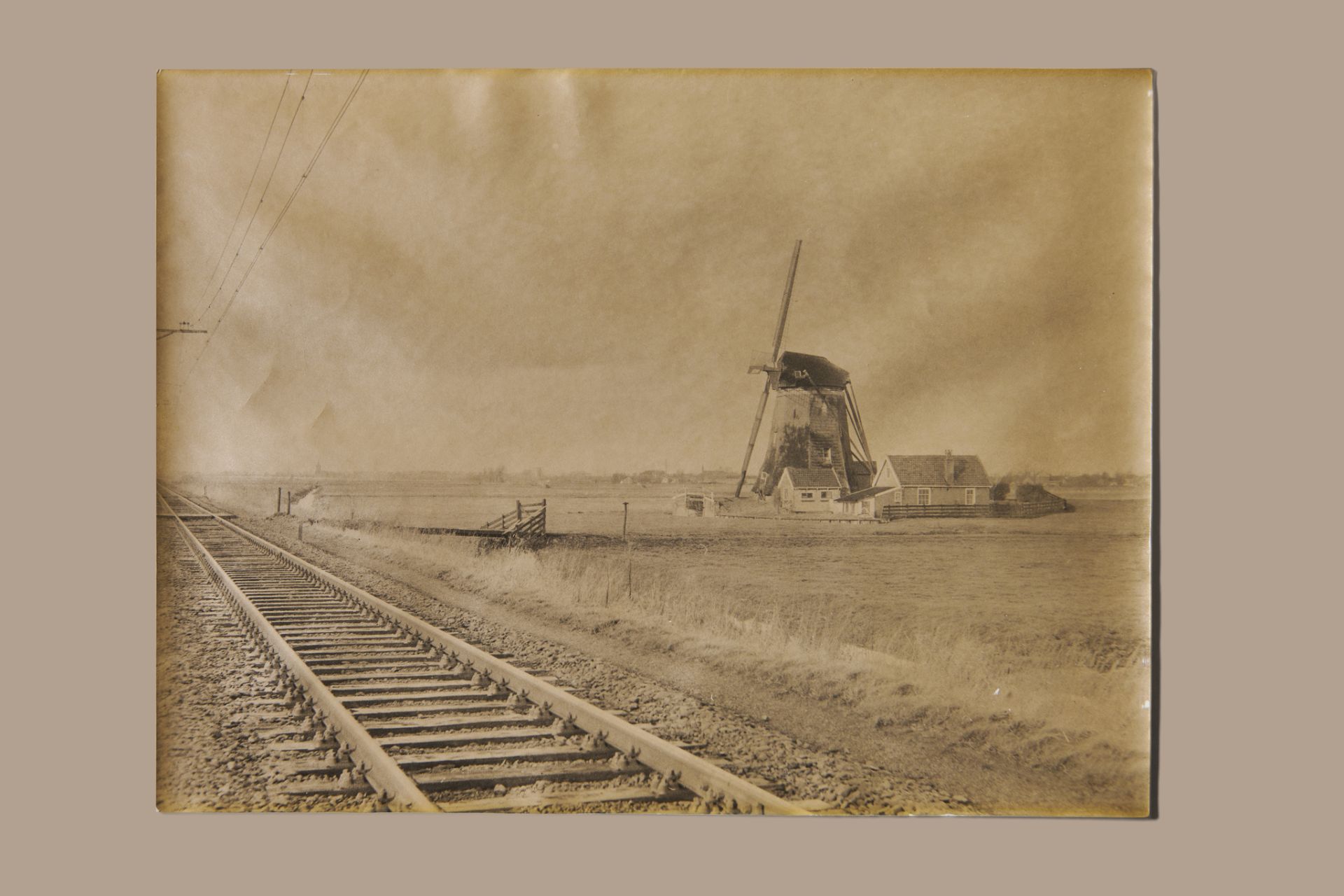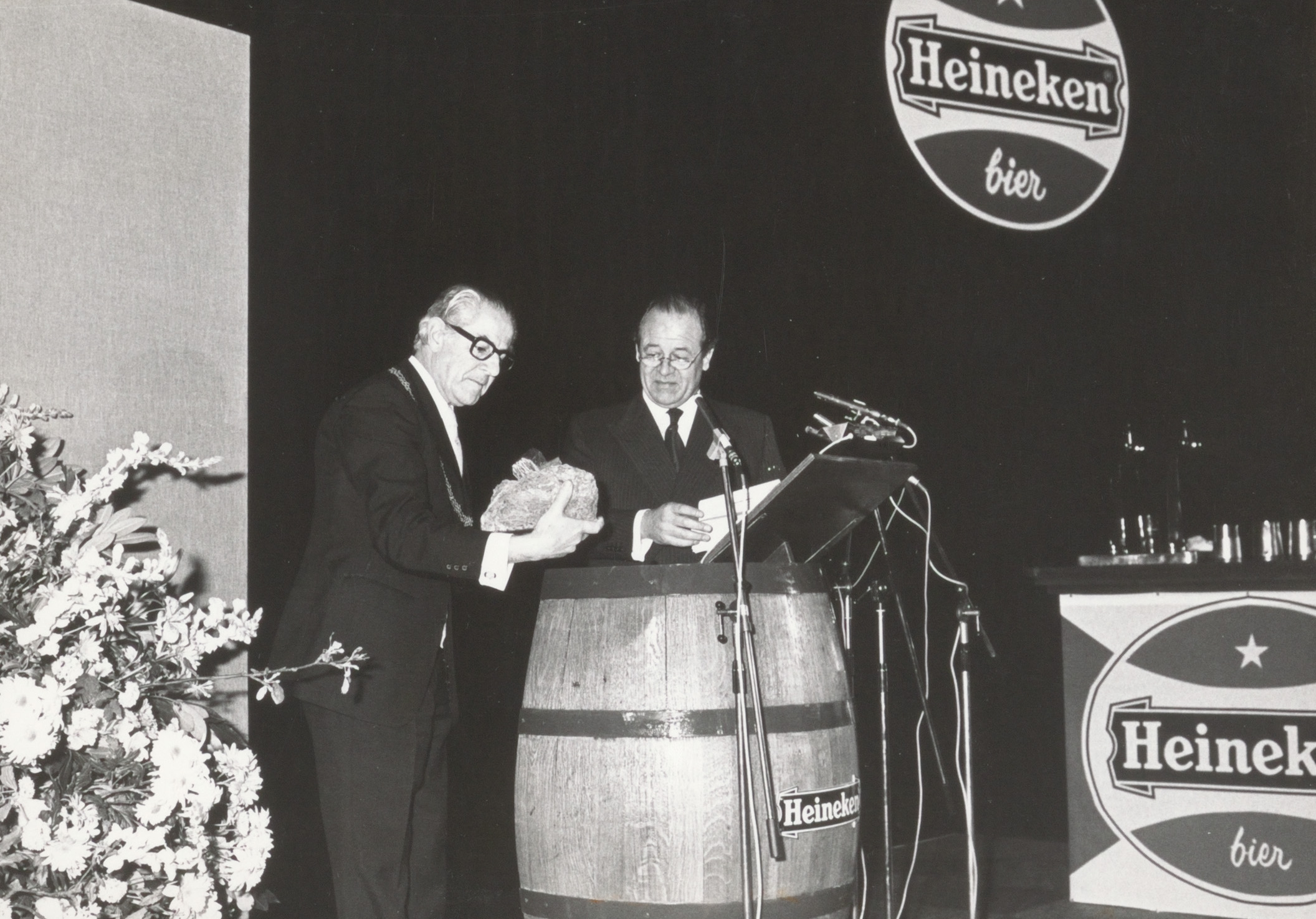INFO
The Barremolen windmill in Zoeterwoude, before the construction of the Heineken brewery
1969
Photo
h 18 x w 24 cm

Brewery in the polder
In 1971, Heineken purchased 80 hectares of land in the municipality of Zoeterwoude in the Oude Groenendijkse polder, also known as the 'Barrepolder.' A new brewery was built here, replacing the old Heineken brewery in Rotterdam.
The photo captures the polder with the distinctive ‘Barremolen’ windmill in its original state.
From polder to park landscape
In his opening speech on 18 April 1975, Alfred 'Freddy' Heineken said, ‘When we decided to build a new brewery, we envisioned a landscape of industrial buildings, spread out over a beautiful park, as opposed to one massive construction. …In our opinion a well-balanced ecological balance was achieved by largely maintaining the existing ponds and plantings.’
Green army
Visitors to the Zoeterwoude brewery still experience this 'open planning' today. A tributary of the Old Rhine River, the picturesque Weipoortse Vliet, runs through the brewery grounds. The first tree, a sweet May cherry, was followed by a green army of thousands of trees, shrubs, and plants – including hops with their decorative cones: a bitter base ingredient of beer.
Golden crib
Simultaneously, construction here was done with respect for history, as Freddy Heineken explained at the Zoeterwoude brewery's opening in 1975: ‘The history of this diked march dates back to many centuries ago. The remains of the foundations of a castle named Huis te Zwieten can still be found on this terrain. It dates back to 1321 and its moat is still intact. Legend has it that a golden crib once sank near it. People would pay the farmer who owned the terrain a dime for permission to dig around for this treasure. We also acquired these rights, but it cost us significantly more.’ Subsequently, Freddy presented the mayor of Zoeterwoude with a miniature golden crib.

Preserving heritage
The eight-sided Barremolen polder mill is another valuable heritage element. It had been draining the polder into the Old Rhine River since 1661, but lost its function due to electric pumping. Heineken restored the ruinously neglected mill and dedicated it to Leo van Munching: Freddy's mentor, who put Heineken beer on the map in America with a Dutch mill as a symbol.
Emotional farewell
Following the relocation of the Rotterdam staff to the Zoeterwoude facility in 1975, it was the turn of the Amstel Brewery's employees on Amsterdam's Mauritskade in 1982. Those from the Heineken facility on Stadhouderskade followed suit six years later. The city breweries had run their course due to expansion and transportation issues. The closure profoundly affected many Amsterdam employees, and during the farewell reception in 1988, the company bid farewell to no fewer than 53 individuals. For those making the move, adjustment was inevitable – both to the polder location and the state-of-the-art facilities. One employee remarked, ‘Yes, that factory is different. It's all steel, you know. Stainless steel. That's different from copper. Copper is quality.’